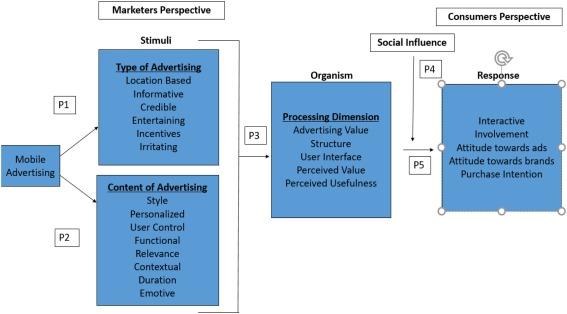Digital Academic Transcripts: Revolutionizing Records for the Future
In today’s fast-evolving digital world,the management of educational records is undergoing a fundamental shift. Digital academic transcripts are rapidly replacing customary paper-based records, streamlining processes, and revolutionizing how students, institutions, and employers interact with academic data. In this comprehensive guide, we’ll explore what digital transcripts are, their benefits, real-world examples, practical tips for implementation, and why they are vital for the future of education and the global workforce.
What Are Digital Academic Transcripts?
A digital academic transcript is a secure electronic version of a student’s educational record. Unlike conventional paper transcripts, digital transcripts leverage encryption, blockchain, and secure cloud technologies to ensure authenticity, accessibility, and efficiency. Delivered in formats such as PDF, XML, or even blockchain-based credentials, these records can be easily shared with universities, employers, and verification agencies worldwide.
- Paperless and Secure: Eliminates the risks of document loss or tampering.
- Global Access: Transcripts can be accessed online from anywhere.
- Automated Verification: Many systems allow instant verification, reducing fraud risk.
Why Digital Academic Transcripts Are the Future
With the rise of global education and remote work, digital transcripts have become a necessity. They not only simplify administrative processes but also cater to the increasing demand for speedy, secure, and verifiable credentials. Here’s why adopting digital transcripts is essential:
- Global Mobility: Students applying to universities or jobs internationally need transcripts that are instantly accessible and verifiable.
- Cost-Efficiency: Reduces the expense of printing, mailing, and administrative handling of physical documents.
- Environmental Impact: Digital solutions support sustainability by decreasing paper usage.
- Data Security and Privacy: Advanced encryption and permission controls protect student data from unauthorized access or forgery.
Key Benefits of Digital Academic Transcripts
- Immediate Delivery: Students can receive their records in minutes, not days or weeks.
- Reduced Administrative Workloads: Automation frees staff for core educational support.
- Improved Record Accuracy: Digital systems minimize manual entry errors and inconsistencies.
- Long-Term Preservation: Cloud storage and digital backups ensure records are preserved beyond the lifespan of paper.
- Enhanced Student Empowerment: Students can easily access and control how their data is shared.
How Digital Transcripts Work: Technologies Behind the Scenes
Today’s digital academic transcript systems are built on robust technologies that guarantee authenticity, usability, and interoperability:
- Blockchain: Provides tamper-proof, clear document recording and verification.
- Cloud Computing: Ensures secure storage, backup, and 24/7 access to academic records.
- Digital Signatures: Authenticate the issuer and prevent unauthorized modifications.
- Standardized Formats (e.g.,PDF/A,XML,LER): Enable seamless sharing between different institutions and systems.
WordPress Styling for Digital Transcripts Content
For educational institutions using WordPress to share transcript information, presenting content with clear structures and engaging visual cues enhances readability. Here are a few styling tips:
- Use Headings: Organize content with
- Highlight Key Terms: Use bold or colored text for important points to draw attention.
- Bullet Points: Break up complex information into digestible lists for swift reading.
- Call-to-Action Buttons: Use styled buttons for downloads or request forms,increasing user engagement.
Case Study: Universities Leading the Digital Transcript Revolution
Several pioneering institutions have embraced digital academic transcripts and set new standards for educational record-keeping:
-
MIT (Massachusetts Institute of technology):
- Launched the “Blockcerts” initiative, allowing students to receive blockchain-verified diplomas and transcripts.
- Facilitates instant, global verification by employers and institutions.
-
National University of Singapore:
- Introduced “Digital certificate System,” issuing tamper-resistant credentials sharing through secure URLs.
- Reduced processing times for graduate applications and employment verification by over 60%.
-
European Student card Initiative:
- Enables seamless academic mobility across participating European countries with easily shareable digital records.
Practical Tips: Implementing Digital Transcript Solutions
Transitioning to a digital transcript system can seem daunting, but with the right approach, it’s manageable and offers huge long-term benefits. Here’s how:
- Assess Your Institution’s Needs: Understand volume, security levels, and interoperability with other systems.
- Choose the Right Platform: Evaluate digital credential providers offering features like cloud storage, encryption, and blockchain integration.
- Train Staff and Students: Educate users on requesting, receiving, and sharing digital transcripts.
- Integrate With existing Systems: Ensure compatibility with your LMS, SIS, and other student data platforms.
- Communicate Benefits: Raise awareness about enhanced security and convenience among stakeholders.
Security Considerations
Security is crucial in handling academic records. Institutions should:
- Enable multi-factor authentication for user access.
- Deploy end-to-end encryption to protect data.
- Regularly audit and update security protocols.
- Comply with local and global data privacy regulations (like GDPR).
First-Hand Experiance: Transforming Student and Employer Interactions
As someone who has both requested and received digital academic transcripts,the difference is remarkable. Instead of waiting weeks for a paper copy to arrive by mail, I received a secure link via email within hours. Employers appreciated the ability to verify my credentials with a single click, and I felt empowered knowing my educational achievements were protected against loss or forgery.
“Digital transcripts not only saved me time, but also allowed me to confidently showcase my academic achievements during the job application process.” – Recent Graduate
This real-world convenience and security highlights why digital academic transcripts are rapidly becoming the gold standard.
Conclusion: Embracing a Digital-First Academic record Future
Digital academic transcripts are revolutionizing educational record-keeping, offering immense advantages in speed, security, accessibility, and cost-effectiveness. As the world becomes more interconnected and demands instant verification for academic and professional use, adopting digital transcripts is not just forward-thinking—it’s essential.
Educational institutions, employers, and students who embrace digital records are better positioned for success in an increasingly digital and mobile society. With robust technology, global compatibility, and growing adoption, digital academic transcripts represent the future of educational documentation.
ready to usher your institution into the digital transcript era? Explore leading solutions and start empowering your students for tomorrow’s opportunities, today.

